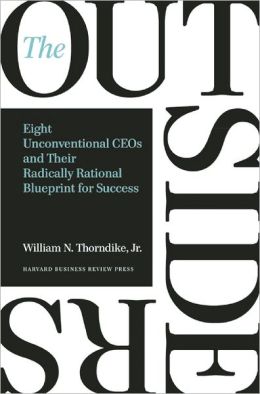Running a business is like being in a gorge. Your visibility is only upto the next curve.
Entrepreneurship
The decision to allocate capital
Last year, in June, I liquidated most of my debt investments thinking that I would invest it in my own company.
In that period, I also read this book – “The Outsiders”. I really liked the modus operandi of the entrepreneurs featured in the book. They were all capital allocators and had done very interesting things – many a time going against conventional ‘grow big’ logic. Those guys often would ask themselves, “which is the best option to put my next Rupee into?”. They would always seek an edge. And got out of businesses with leaky-boat economics. And invested heavily into businesses where they could build more competitive advantage.
Growing the root
I read this statement by Rahul Dravid in an article and loved it. It’s similar to this post I wrote a while earlier.
“When I’m requested to speak to youngsters I like talking about this phase of my life and liken it to fascinating plant: The Chinese Bamboo. You can take a Chinese bamboo seed and plant it in the ground, water and nurture the seed for an entire year & not even see a single sprout. Infact, you’ll not see a sprout for 5 years. But suddenly, a tiny shoot will spring from the ground. And over the next 6 weeks, the plant can grow as tall as 90 feet. It can grow as fast as 39 inches every 24 hours. You can literally watch the plant grow.
What was the plant doing during these 5 years, seemingly dormant period, it was growing its roots. For 5 full years it was preparing itself for rapid, full growth. Without this root structure, the plant simply couldn’t support itself for its future growth. Some would say the plant grew 90 feet in 6 weeks, I would say it grew 90 feet in 5 years & 6 weeks”
Bootstrapped & being incremental
After I quit my job in 2011 (March), I had little idea about what to do next. I thought I will experiment a bit and see whats in store for me.
I knew I was done with working for someone and wanted to see if I had any capability in building a business – any business, size or industry didn’t matter much.
Things were hazy. I had several half-baked ideas. Tapprs is one that worked out okay.
Tapprs:
Tapprs was never really my primary idea – since it is capital intensive, I kept resisting it. But all my other ideas failed to gain traction and I kept getting deeper into Tapprs and it started doing significant revenues. Natural course took over, esp after some inspiration by Lensrentals.com CEO Roger Cicala.
At Tapprs, things weren’t based on rocket-science. We simply paid attention to:
- taking care of customer well
- being fair and honest with employees and other stake holders
- putting business interests ahead of personal interest
- not taking short-cuts
- being fanatic about processes, systems, inventory & money management
That shows on the dashboard below, at least a bit.
I have little clue what I’m doing, but it doesn’t matter
This year, I started firo.in.
I ran a few trials and very quickly realized I didn’t want to push it further.
In the past, I’ve done many such things. Before Tapprs worked out, I had a few dud ideas. Then I tried a Marketplace under Tapprs, but I screwed it up. I gave a shot at building a photographers directory service, but that hasn’t gained much traction.
Recently, I mentioned to a few friends that I would leverage my experience at Tapprs to experiment with customer satisfaction, business intelligence & automation tools (onemetric.io). They were aghast. Yet another stupid thing! There were few comments that weren’t exactly encouraging.
Yes, I have little clue, esp where I am headed towards. But it doesn’t matter much at this stage. Here’s why:
- I pay for it with money I ‘earn’ the hard way!
I have a company that makes money. And it pays for all my experiments with hard earned money. I am not burning ‘other people’s money’. I may not have a clue as to where I am headed, but I know what my burn is and how I can do crazy stuff and yet, sustain myself. - Investing for the future
So irrespective of what happens to these ideas, I know I will learn something that will be useful in future. I am maximising learning – thats it. I learnt a ton of other stuff like marketing, product development, a bit of design, etc. 2 years ago, I struggled to build our own app for Tapprs, but now I can build complete web apps without external help. I can setup my own server which was like Latin 2 years back. All that adds up. - It’s way better to work on a bad idea than to wait for a perfect idea
That perfect idea happens to very few people. Rest of us have to keep digging. Why wait – just keep churning through ideas. - Improving my luck
Call it spray and pray or whatever. But if I go do something, I improve my odds. It’s as simple as that. - Stepping out of comfort-zone deliberately
Personally, staying out of the comfort zone is a key thing to me. There is no learning in the comfort zone – you have to be outside it to learn. These things ensure just that!
3 years of startup blogging
I was reviewing the articles from last 3 years of my blog – those focused on entrepreneurship.
Here’s a quick summary.
Note: If you’re new here, I quit from my job after 8 years in the IT industry on Mar 11, 2011. After wandering a bit, I started Tapprs ventures India private limited – a profitable small company now based in Bangalore.
Quitting from job
This is what I wrote when I put my papers on Jan 4, 2011. In it, I talk about:
- the need to give a shot at my own venture
- how I was clueless about what idea to pursue, what to do, etc
- why I still wanted to do it
Also, I spoke about 2 things I wanted to avoid:
- capital intensive ideas
- long gestation period ideas
Interestingly, I ended up doing a capital intensive idea (Tapprs). My strong aversion towards loss and risk might have contributed to my thinking of wanting to avoid long gestation ideas.
Easy and now
“You can’t produce a baby in one month by getting nine women pregnant.”
― Warren Buffett
I’ve been thinking a bit of late.
There are times when I could have done a much better job of something. I had the ideas, I had the skills. Yet, I didn’t.
I sometimes do things that are pretty mediocre – that is one big reason what pulls my results down, I think.
I wondered why.
One answer is – our brain is automatically incentivised to choose the ‘easy’ and ‘now’.
We could do something in 2 hours or we could do a quickie fix in 10 minutes. Many a time, we just settle for the latter – and justify it with umpteen reasons – no time, will do a revision soon, whatever.
And many a time, we are too ‘impatient’ to wait for things to be rolled out – we are too focused on the ‘now’. Could we afford to wait for a day or two and do a better job? We could – but we go ahead and do a quickie fix in 20 minutes because it is ‘now’.
The program you wrote has a bug and you need to fix it – how do you do it? You patch it up instead of taking the longer route of ensuring the code is clean, well thought out and reusable. Of course, you fixed it – for now. Easy.
But in the long term, that is what puts you along with those 6.99 billion mediocre people out there.
Want to be better than just mediocre?
Get rid of the easy and now.
I want to – hopefully wil get there one day!
Economics of setting up small businesses-1: Lending library
Quite a few times, I bump into people who want to start their own small business. And many are clueless about how much they would need to start a business.
It’s not rocket science. Also, you don’t have to know everything to start some business – you can learn on the job. That said, here is a short post on what it could take to setup a small business such as a lending library.
I am talking of a small lending library, one that is unsure of its future and hence is starting small with barebones inventory, interiors, etc. No frills. No jazz. No freebies. Continue reading
The rule of the farm
I grew up in Ooty on a tiny farm.
My dad wasn’t a full time farmer (he was a teacher), but we did have a farm running all the while. It was too small to make us any money, yet my father enjoyed working on it.
One of the things I learned from the farm was this. First you prepare, then you sow and only then shall you reap.
Thoughts on Mahindra holidays business model
I have been following Mahindra holidays for quite a while.
They do have an interesting business model.
- Customer pays upfront for timeshare ownership
- Mahindra holidays builds resorts
- Customers get to stay at these resorts for 1 week every year for 25 years (it was 33 years few years ago)
- customer also have to pay an annual fee (increases with price index) and for food and beverages at resort creating an additional recurring revenue stream
- unused rooms are rented to non-members



